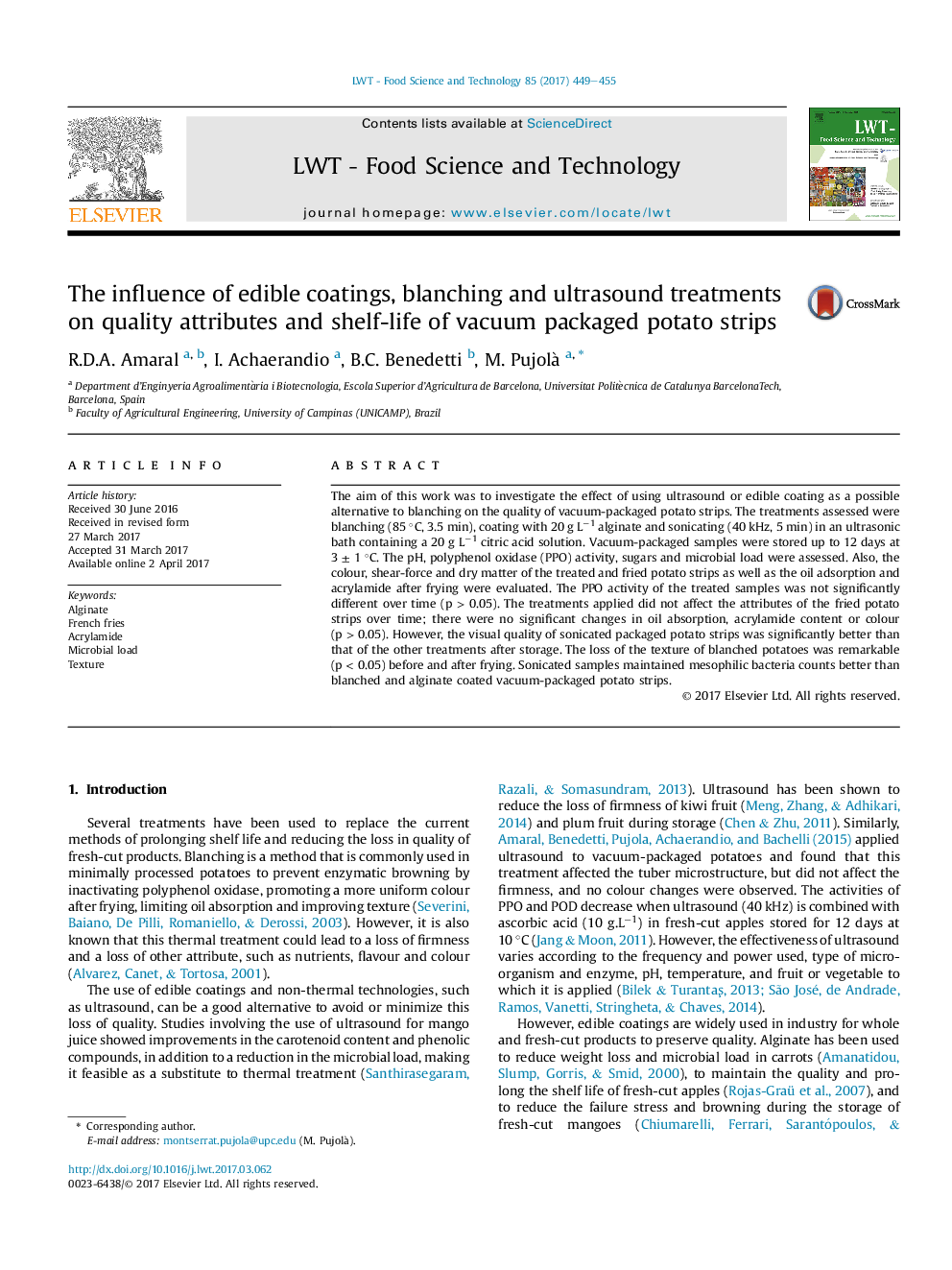| Article ID | Journal | Published Year | Pages | File Type |
|---|---|---|---|---|
| 5768405 | LWT - Food Science and Technology | 2017 | 7 Pages |
â¢Ultrasound and citric acid 20 g.Lâ1 reduced microbial load of potato strips.â¢Sodium alginate 20 g.Lâ1 increased browning and microbial counts.â¢Blanching inhibited the PPO activity but had negative effects on texture.â¢None of the treatments decreased oil adsorption and acrylamide content.
The aim of this work was to investigate the effect of using ultrasound or edible coating as a possible alternative to blanching on the quality of vacuum-packaged potato strips. The treatments assessed were blanching (85 °C, 3.5 min), coating with 20 g Lâ1 alginate and sonicating (40 kHz, 5 min) in an ultrasonic bath containing a 20 g Lâ1 citric acid solution. Vacuum-packaged samples were stored up to 12 days at 3 ± 1 °C. The pH, polyphenol oxidase (PPO) activity, sugars and microbial load were assessed. Also, the colour, shear-force and dry matter of the treated and fried potato strips as well as the oil adsorption and acrylamide after frying were evaluated. The PPO activity of the treated samples was not significantly different over time (p > 0.05). The treatments applied did not affect the attributes of the fried potato strips over time; there were no significant changes in oil absorption, acrylamide content or colour (p > 0.05). However, the visual quality of sonicated packaged potato strips was significantly better than that of the other treatments after storage. The loss of the texture of blanched potatoes was remarkable (p < 0.05) before and after frying. Sonicated samples maintained mesophilic bacteria counts better than blanched and alginate coated vacuum-packaged potato strips.
